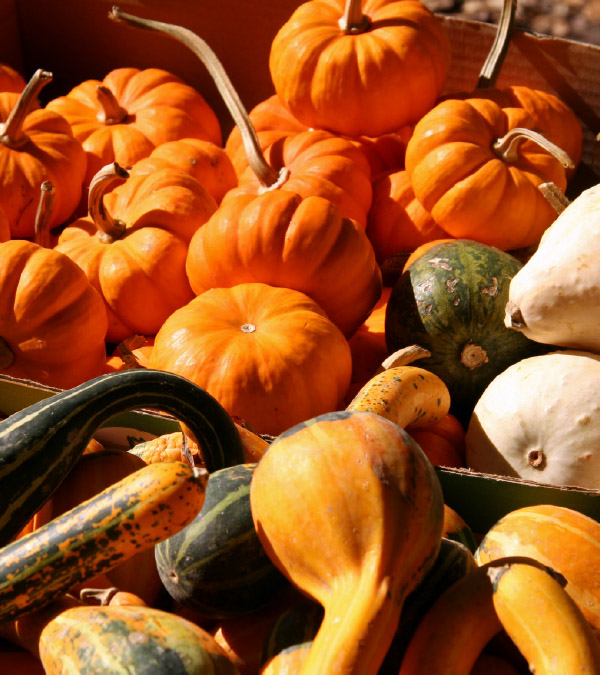
Squash: Autumn’s Bounty
We’ve been partnering with local farmers and producers in our region since 1932, and we’re proud to source hard squash from a variety of local farms here in the Northeast each year, like Shaul Farms in Fultonham, NY, and Plainville Farm in Hadley, MA.
Even though it’s considered a vegetable for culinary use, squash is actually a fruit and part of the gourd family. There are two types of squash: winter and summer. The classification refers to the time of year that the gourd is harvested. Find the following varieties of hard squash in our stores each year: butternut, buttercup, acorn, spaghetti, Irish delicata, turban, baby Hubbard and Red October. These winter squash varieties have much longer shelf life than their summer equivalents.
Nutrition
Packed with antioxidants like vitamins A, C and E as well as fiber, squash is a nutritional powerhouse. One cup of baked, unsalted butternut squash contains 82 calories, 0 grams of fat and over 400% of the daily recommended values of vitamin A. Squash is also a good source of minerals like potassium, magnesium and manganese.
Flavor
From the mild, nutty flavor of spaghetti squash to the creamy pulp of delicata, these fruits are hearty and satisfying, despite their low calorie and fat-free nutritional profile. Winter squash is naturally sweet with a rich texture, while summer squash has a milder flavor, edible skin, and can be eaten raw or cooked.
Preparation
Whether used in sweet applications like pies and cakes or savory dishes like soups and casserole fillings, the versatility of squash makes it a culinary favorite. You can easily prepare most winter squash by slicing it in half, scooping out its seeds and baking or roasting it with a drizzle of olive oil. Use sea salt, pepper and spices to finish off the dish, or try our mouthwatering stuffed acorn squash recipe featuring rice, pears and Gorgonzola.
Did you know…
• Each year, we source our pie pumpkins, carving pumpkins and gourds from local farms here in the Northeast – many of these farms also supply us with summer vegetables like sweet corn and tomatoes.
• There are nearly 150 different varieties of squash.
• Just like snowflakes, no two squashes are identical in weight, shape or color.
• Squash is one of the three main crops planted by Indigenous groups, often referred to as the “Three Sisters.” Maize (corn) and climbing beans were the other two sisters.
• Like pumpkin seeds, the seeds of all winter squash can be roasted or ground to make flour or a butter-like spread.
